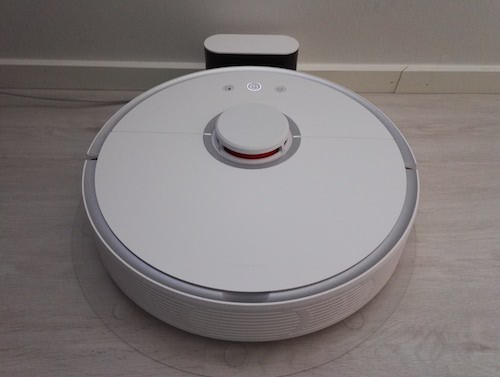Published on
If you own a furry pet, you know that they can cause quite the mess. And it’s not the dirt that is tracked in or the scattered pet food that is the biggest nuisance - it’s the pet hair that invades your home that is the pain in the rear.
A powerful robotic vacuum is a fantastic tool for helping you keep your home free of that annoying hair.
It not only very effectively reduces loose pet hair, dust and dander in your home, it also does it without you having to lift a finger. (Okay, that's not entirely true - you do have to lift your finger just a little to push start on the app.)

Although a robotic vacuum can be the ideal cleaning appliance in a home with furry pets, there are some things to consider when using one. In this article, we'll go through how you get the most out of your investment. Let's dive in!
7 steps to follow - how to make the most of a robot vacuum in a pet home

1. First of all, you need to consider your pet when you bring home your new robotic vacuum. Let your pets get used to the appliance by introducing it slowly.
Before even turning the robot on, you should let your pets have a sniff. Let them slowly approach the new machine, which may be interesting but also scary. Let your pet look, touch, and smell the robot to let them know that it's not dangerous or threatening in any way.
2. When turning on the vacuum for the first time, make sure it is in the low suction mode. Sudden noises may be scary to animals, and they may be frightened by the sudden loud noise.
If possible, just turn on the suction and let your pet get used to the noise before the robot starts moving. Turn up the suction gradually when your pet is at ease with the new loud addition to your home.
3. For the first few times you operate your robotic vacuum, you should stay with your pet to see how they react. Many pets quickly get used to this new companion roaming around with a humming noise, but some individuals may need more time to be comfortable with having a robotic vacuum around.
Make sure your pet is not close to the robot when it starts moving for the first time. Some distance between the vacuum and your pet makes them feel safe while they observe the possibly intimidating moving object.
4. You should always make sure the area around your pet's food, water, and the litter box is out of limits for the robot. Depending on the product, you can do this by marking the area with no-go strips or creating a no-go zone on the app. Doing this will allow your pet to go about their daily business without being disturbed by the robot.
If your pet is sensitive to noises and gets scared easily, it may be a good idea to create a no-go zone where your pet can retreat to when the robot is cleaning. More advanced robots enable you to schedule cleaning cycles room by room, which allows you to schedule daily cleanups for high-traffic areas like the kitchen, hallway, and living room while leaving a bedroom for your pet to rest in peacefully.
5. To get the best cleaning results, you should declutter before each cleaning cycle. Make sure your floors are clear of any unnecessary objects that might prevent the robot from doing its job.
Robotic vacuums nowadays are advanced enough to detect obstacles and to go around them; pet toys on the floor won't be a problem if they are not too small. But because pet hair easily gathers and hides in places like under the furniture, you will get the best results by making sure the areas the robot won't be able to clean are as few as possible.
6. If you can declutter your home and your pet has gotten used to the robotic vacuum cleaning your home, ideally, you could schedule daily cleaning cycles while you're at work. Coming back to a clean home is an amazing feeling, and regular cleanups will significantly reduce the amount of pet hair in your home.
However, if your pet is sensitive, you might not want to leave them alone with the robot in action. If that is the case, you should try to have the robot clean your home every night or every other night. You can take the dog out for a walk or cuddle up with your cat to watch your favorite show on Netflix while your robot takes care of vacuuming for you.
7. Just remember that the key is to have a routine. If you let dust, dander, and pet hair accumulate on the floors, it will be wafted into the air, landing on all the above-floor surfaces. If, however, you routinely run the robot vacuum to collect the pet hair from floors and carpets, there is considerably less pet hair, to begin with.
The supply of loose pet hair is living with you, and there is always more hair to be shed. But a robotic vacuum can easily solve the problem of constantly having to clean up after your furry friend. You can find our reviews of the best robot vacuums here.
In a home with pets, the robot is an effortless way to keep up with a cleaning routine. It will save you a lot of time and effort while keeping your house cleaner and helping you achieve that pet hair-free home.

